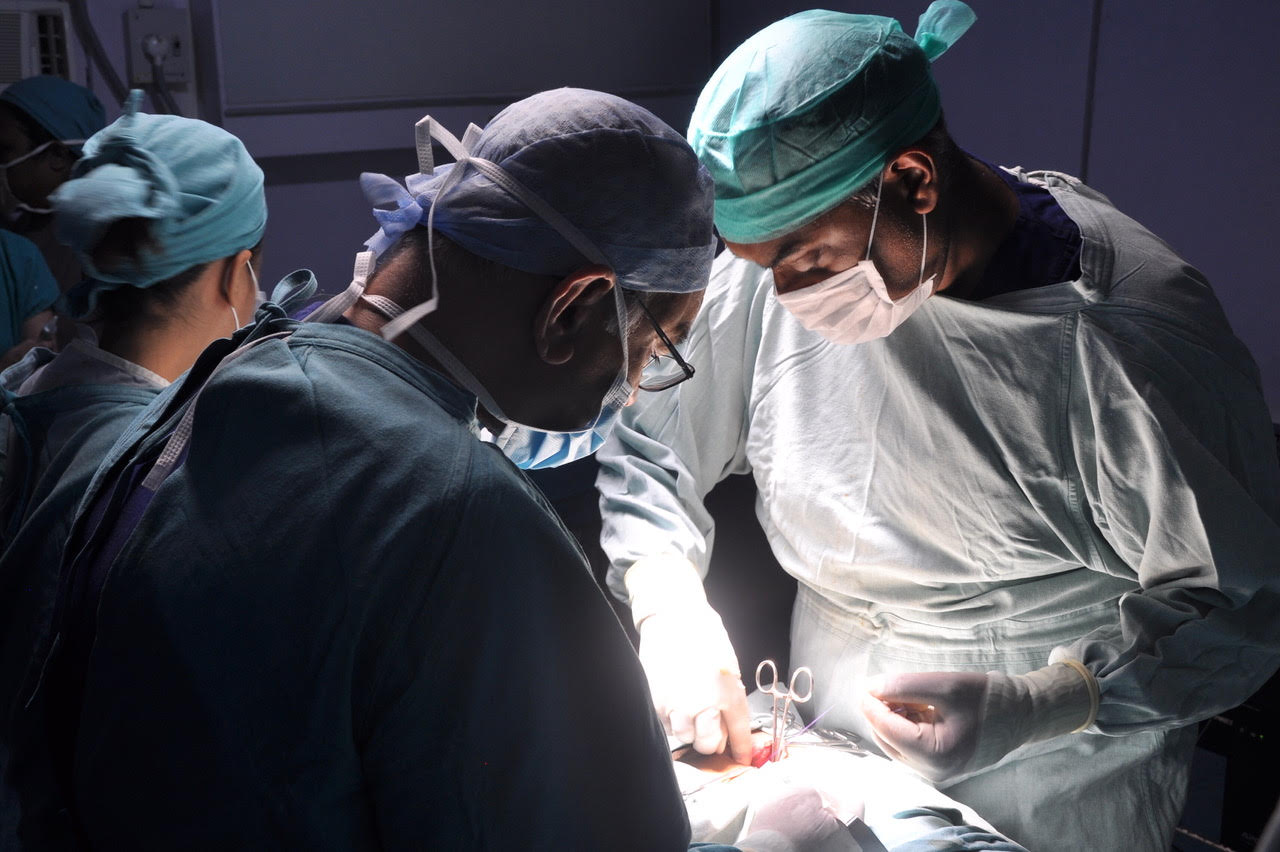
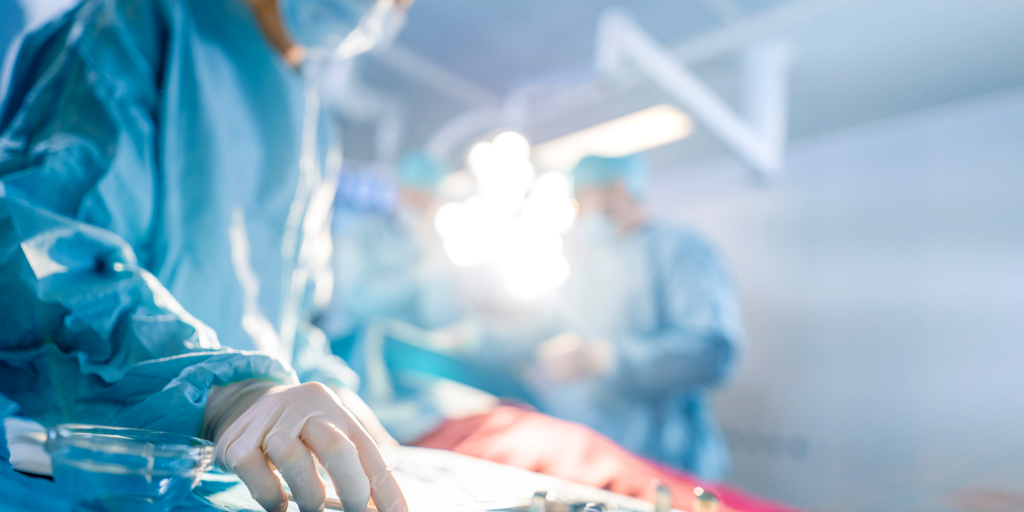
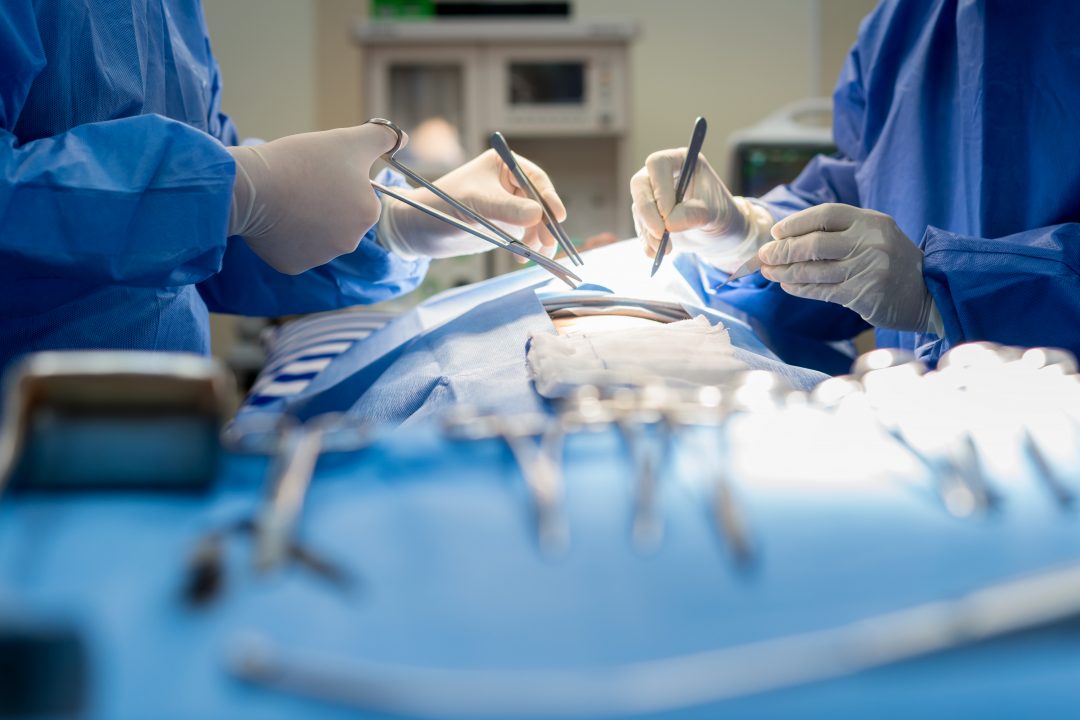
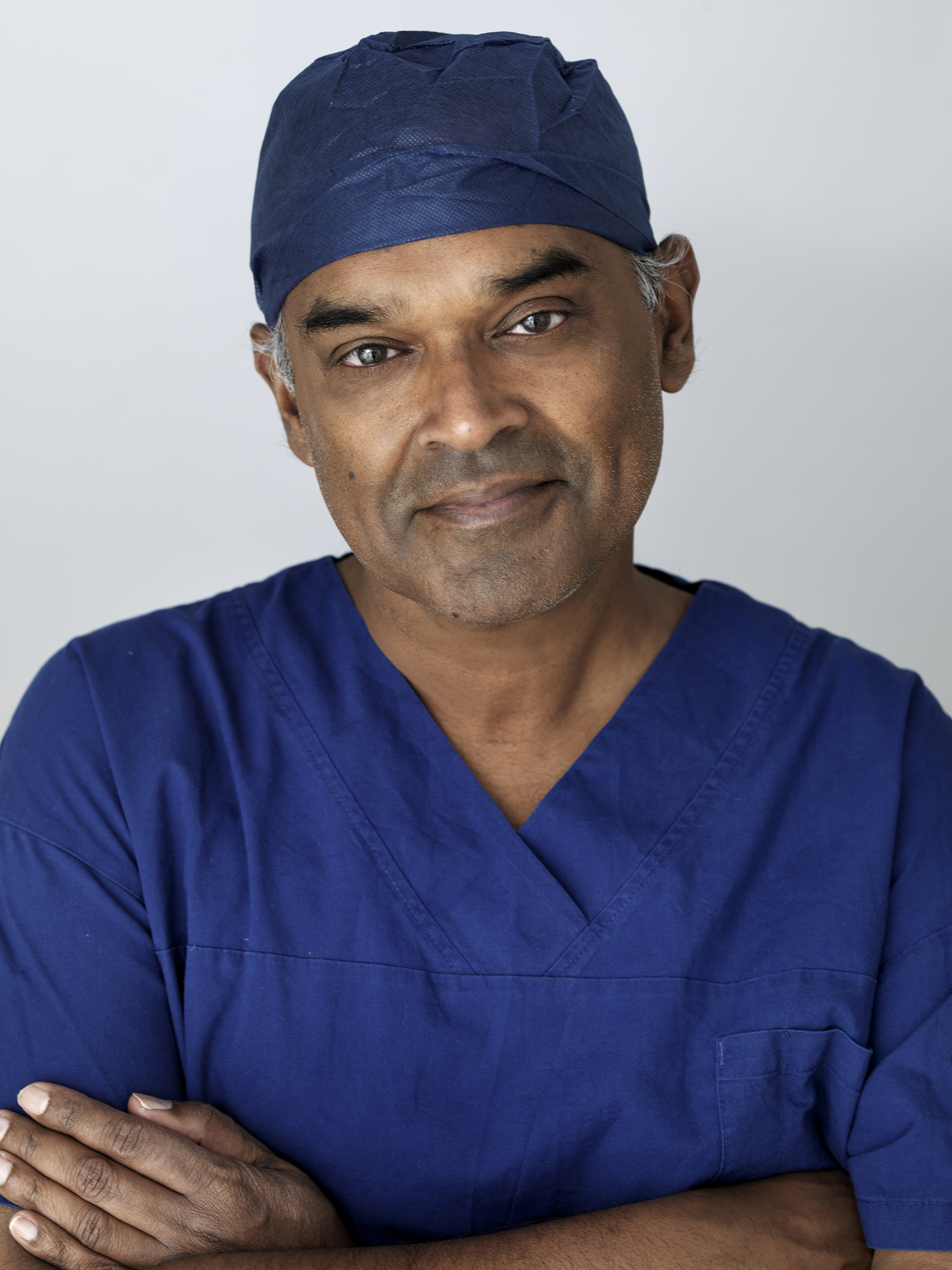
Hernia Surgery
A hernia can occur whenever the muscles of the abdomen develop a weak spot or tear. An organ such as the intestine can push the abdominal lining through the weakness and form a balloon-like sac. This can often be seen as a bulge under the skin when standing up.
Most hernias occur at the groin (inguinal or femoral). They can also occur at the belly-button (umbilical), just below the breast bone or sternum (epigastric) or through an old surgical scar (incisional).
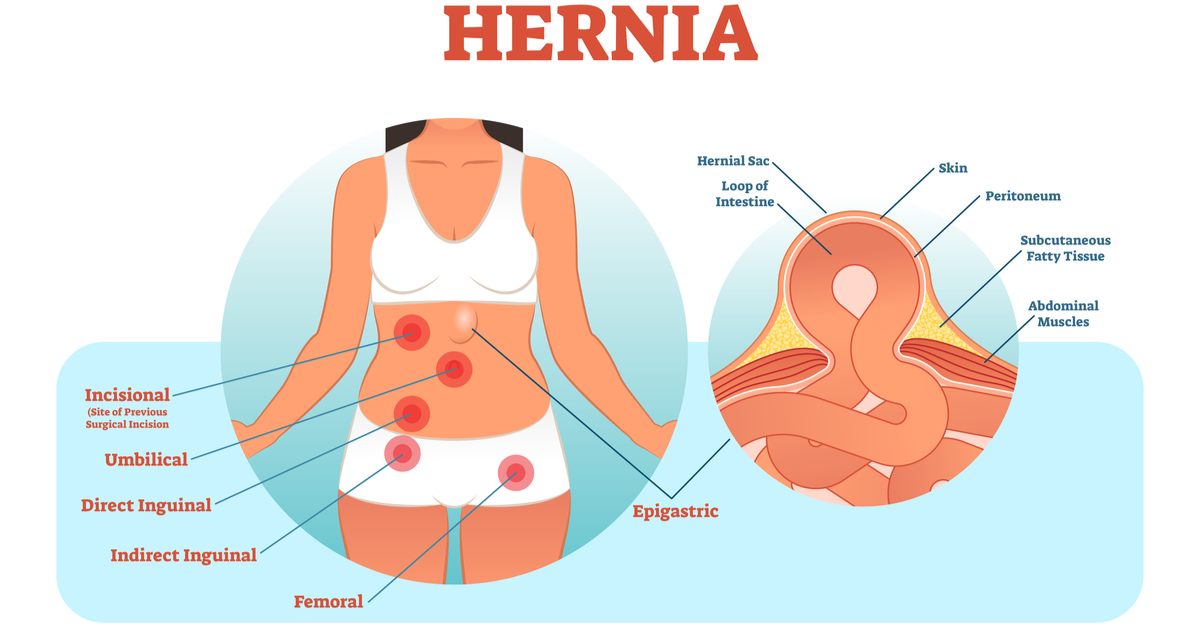
Hernias can cause pain, burning, a gurgling sensation, nausea or vomiting. If untreated, they would usually tend to gradually increase in size. Occasionally they can strangulate (when the blood supply to the intestine is blocked off, and part of the intestine dies) which would require emergency surgery.
Hernias can be repaired by open surgery or laparoscopic surgery.
With an open repair, an incision is made over the hernia, and the protruding contents (usually intestine) is returned back inside the abdomen. The weakened area is repaired, often with the use of a synthetic mesh to strengthen the weakened tissues.
With a laparoscopic (“key-hole”) repair, several small incisions are made. A small fibre optic video camera is inserted, and special surgical instruments inserted through the other small incisions. The operation is performed looking at a magnified image on a video monitor. The protruding hernia contents are returned into the abdomen, and the weakened tissues are repaired with the use of a synthetic mesh.
The decision as to which type of surgery to choose, depends on the hernia, your full medical and surgical history, how soon you need to return to normal activity, and other factors which Dr Jayasundera will discuss with you and make a recommendation as to which approach would suit you best.